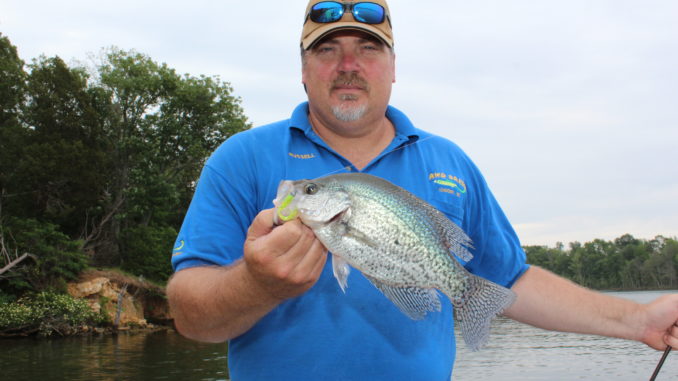
March is prime time to slow-troll or drop minnows and jigs into Lake Wateree crappie hangouts for fish ready to move shallow to spawn. Here’s how to catch them.
Take a random sample of anglers and ask what species of fish Lake Wateree is best known for, and you’re likely to get three main responses: largemouth bass, catfish and crappie.
The trio definitely dominates the mind-set of fishermen who visit Wateree. But in March, many anglers say crappie is king. With water temperatures warming enough for crappie to move in from the deep to spawn, they are easy to find. And many anglers hit the water for the first time of the year to stock up on these tasty panfish.
So it’s a great time to catch crappie on Wateree. And to Capt. Buster Rush of Rush Guide Service, that means back-trolling with jigs in the creeks.
The weather can be unpredictable, with temperatures fluctuating. But that doesn’t pose a problem for Rush’s type of fishing.
“Back-trolling with jigs allows you to cover a great deal of water in a short period of time. And having multiple rods out at different depths helps determine where the fish are holding,” Rush said.
Crappie are in all stages of the spawn this month
Some crappie will be staging to spawn, some will be starting to spawn and some have already spawned. Fishing the way Rush does puts bait in front of at least one of those groups – if not all three – as he slowly passes through an area with jigs swimming at varied depths.
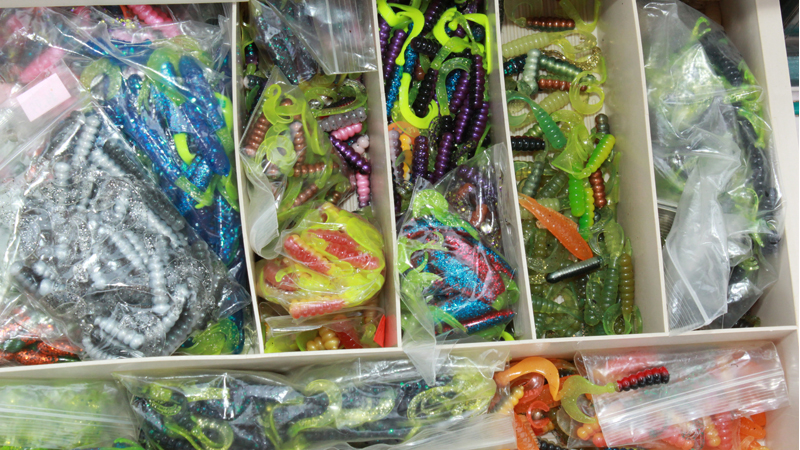
“A lot of people anchor down and tight-line with minnows in March. But this is when I start dragging,” said Rush, referring to his method of trolling backwards on his pontoon boat. “We drag through all depths of a creek, pass over drop-offs and ledges and over brush piles.
“The brush piles are where we usually catch the most fish. But early in the month we’ll sometimes troll parallel to the shoreline through water that’s about 20 to 25 feet deep. And the crappie will bite in 7 to 8 feet of water – even with no structure nearby,” said Rush (803-432-5010). “This is when it’s important to know how to use a depth finder and identify what’s on your screen.”
When back-trolling, the key to finding fish lies in a combination of factors. These include boat speed, lure depth, lure color and line diameter.
“I try to keep my trolling speed between .8 and 1.1 mph,” said Rush. He puts his outboard motor in reverse and watches his electronics to monitor his speed. Sometimes he uses one or more drift socks if the wind and current require it.
Go slow, use various rod lengths
“Speed is one of the most-important factors in how deep your jigs are swimming. I’ll experiment until I find what speed is working on any given day,” he said. He pointed out that the slower you go, the deeper your jigs will swim.
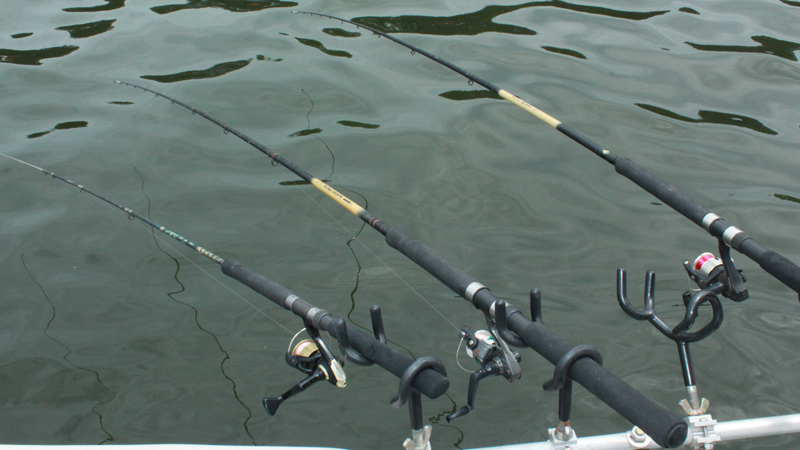
Rush puts 12 rods out: three in rod holders on the right side of the boat, three directly across on the left side and three off each side of the bow. When back-trolling, the bow becomes the stern, so the jigs on those rods are the last to swim over the brush piles. In each cluster of rods, one is a 10-footer, one is a 12-footer, and one is 14 feet long. This setup helps limit the number of line tangles.
A spinning reel spooled with 6-pound-test line, 1/16-ounce jigs, and a small split-shot a foot or 2 above the jig complete each outfit. Varying the size of that sinker and letting out different amounts of line will allow each jig to swim at a different depth.
“When most people think of jig fishing, they envision sitting still and fishing straight down,” said Russell Rush, the guide’s son, who has won his share of crappie tournaments. “But the way we fish, we use them more like swimbaits.”
Buster Rush uses several different colors of jigs. And as the day goes on, he weeds out the ones that aren’t producing, exchanging them with colors that are. His preferred baits are 2-inch WOW grubs by AWD and 2 ½-inch Crappie Delight or Triple Ripple minnow jigs. The best colors change daily, and sometimes even hourly.
Stick with the hot pattern, but ditch it when it cools off
“At some point during the day, you’ll get a feel for which colors, which depths and which locations are producing best. Then I just stick to that pattern as long as it works,” Rush said.
“In March, Beaver Creek, Singleton Creek, and White Oak Creek are some of my go-to spots,” Rush said. “And the mouths of most any cove will hold numbers of crappie.”
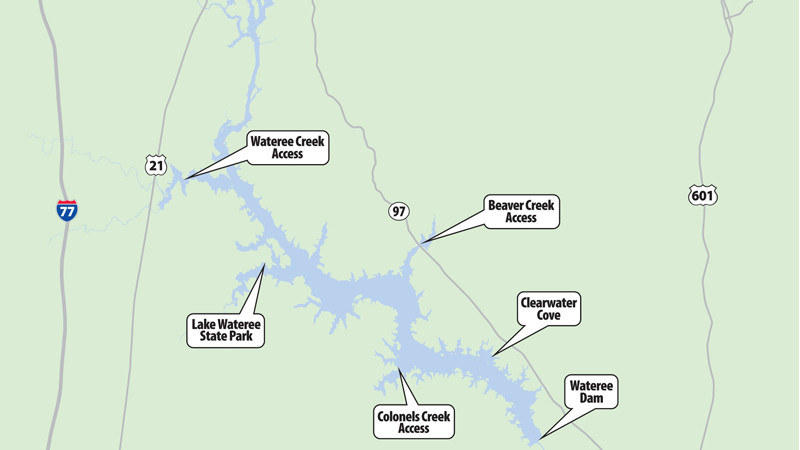
Like Rush, Robert Munn of Lugoff has fished for crappie on Lake Wateree for decades, but he uses a different technique. He fishes mainly in the Clearwater Cove area and the coves between Clearwater and Wateree Dam. He has scores of smaller brush piles marked and finds them one at a time with the depth finder aboard his 15-foot aluminum boat. When he finds one, he notes the depth, then dangles a live minnow or jig in that general depth.
“Sometimes they want it a foot above or below where they are holding, and sometimes they want it right in their face. So you just have to experiment a little until you find out what is working,” said Munn. “And that can change several times, even over the course of one day.”
Low-tech fishing still catches plenty of slabs
Munn has two depth finders, and while they are positioned side-by-side where he can easily see them both while operating the trolling motor, the transducers are mounted in different places. One hangs on the base of the trolling motor on the bow and the other is at the stern.
“This helps a lot in staying on top of a brush pile and estimating when the boat is positioned properly,” said Munn. He opts for low-tech when it comes to terminal tackle, fishing with cane poles instead of the fiberglass crappie poles that are popular with many fishermen. He likes the feel of real cane poles and said they will float if they fall out of the boat.
Munn uses 10-pound monofilament, 1/16- to 1/4-ounce split-shot, Nos. 1 or 2 light-wire hooks and styrofoam crappie floats when using live minnows. He replaces the floats and hooks with jigs when opting for artificial baits.
To make quick changes in fishing depths, Munn places several small pieces of electrical tape at various intervals on his cane poles.
“I’ll have one placed at 8 feet, another at 9 feet and so on,” he said. “Once I mark the depth of the fish on the depth finder, I’ll adjust my corks using the tape as a guide, and I’ll vary them until I see where the fish want it.”
When fishing this way, Munn doesn’t constantly troll. He will sit still over the brush pile when possible. And sometimes he uses the trolling motor just to keep the boat in place. And unlike Rush, who trolls large areas over numerous brush piles in each pass, Munn sticks to one brush pile for a while, sometimes circling above it several times until the fish tell him it’s time to move on.
DESTINATION INFORMATION
HOW TO GET THERE — Lake Wateree is easily accessed from I-20 and I-77. Take I-20 to US 521 to SC 97 for access to numerous landings on the Camden side of the lake. Lake Road leads to many landings on the Lugoff side. To get there, take I-20 to US 1 to Longtown Rd. to Wateree Dam Rd., then left onto Lake Rd.
TACKLE/TECHNIQUES — Capt. Buster Rush recommends ultra-light spinning reels mounted on 10- to 14-foot crappie poles, spooled with 6-pound mono, 1/16-ounce jigs with 2- or 2 1/2-inch grubs of various colors. Place a small split-shot a foot or two above the jig and trolls through the creeks and mouths of coves at approximately 1 mph. Cane poles and fiberglass crappie poles can also be used with jigs or live minnows. Fishing over brushpiles is a good bet, and fishing around and under docks can also be productive.
GUIDES/FISHING INFO — Buster Rush, Rush Guide Service, 803-432-5010 or www.rushguideservice.com; Clearwater Cove Marina, Camden, 803-432-5315.
ACCOMMODATIONS — Lake Wateree State Park, Winnsboro, 803-482-6401; Ramada Limited, Ridgeway, 803-337-7575; Wateree Lake Campground, Liberty Hill, 803-273-3013; Lake Wateree Properties, Ridgeway, 803-337-5253, Holiday Inn Express, Camden, 803-424-5000.
MAPS — Delorme Atlas and Gazetteer, www.delorme.com, 800-561-5105; Lake Maps, www.lake-maps.com; Duke Energy, www.duke-energy.com, 800-777-9898; Kingfisher Maps, www.kfmaps.com, 800-326-0257.

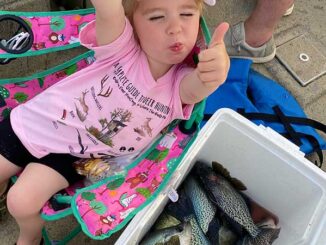
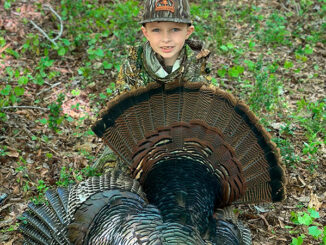
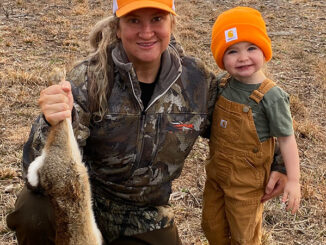

Be the first to comment